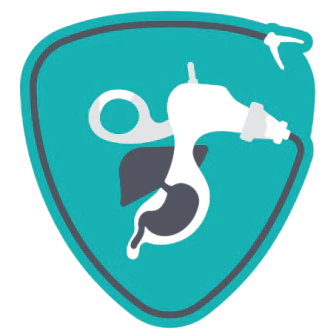Have you ever enjoyed a delicious latte, only to be met with a fiery response in your chest later? You’re not alone. Millions suffer from acid reflux, an unpleasant burning sensation caused by stomach acid creeping into the esophagus. But what if your morning coffee companion, the seemingly innocent dairy, is the secret culprit behind the burning truth? Let’s dive into the surprising link between lactose intolerance and acid reflux, and explore how to manage both for a smoother digestive journey.
What is Lactose Intolerance?
Lactose intolerance is a digestive condition where your body struggles to digest lactose, a sugar found in milk and other dairy products. This happens because your small intestine lacks sufficient amounts of lactase, an enzyme needed to break down lactose into simpler sugars your body can absorb. When undigested lactose reaches your large intestine, it ferments, causing bloating, gas, abdominal cramps, and diarrhea.
Why Can Lactose Intolerance Worsen Acid Reflux?

While the exact mechanisms aren’t fully understood, several factors might explain why lactose intolerance can worsen acid reflux symptoms:
- Increased Stomach Acid Production: Lactose intolerance can trigger the release of additional stomach acid in some individuals. This excess acid can further irritate the esophageal lining, leading to heartburn and other acid reflux symptoms.
- Delayed Stomach Emptying: Lactose fermentation in the gut can create gas and bloating, putting pressure on the lower esophageal sphincter (LES). This muscular valve usually prevents stomach contents from flowing back into the esophagus. The pressure caused by gas can weaken the LES, allowing stomach acid to rise and trigger acid reflux.
- Inflammation: The fermentation process caused by lactose intolerance can irritate the digestive tract, leading to inflammation. This inflammation can extend to the esophagus, further contributing to acid reflux symptoms
Treatment for Acid Reflux Caused by Lactose Intolerance
The good news is that managing both acid reflux and lactose intolerance often go hand-in-hand. Here are some strategies to consider:
- Dietary Changes: This is the cornerstone of managing both conditions. Reducing or eliminating dairy products from your diet can significantly improve symptoms. Look for lactose-free alternatives for milk, cheese, yogurt, and other dairy products. Consider lactose-free milk made from almond, soy, oat, or rice.
- Lactose Enzyme Supplements: Lactase enzymes can be taken before consuming dairy products to help break down lactose and prevent digestive discomfort. These are readily available over-the-counter and come in various forms like tablets, chewable tablets, and even drops.
- Lifestyle Modifications: Certain lifestyle changes can help manage acid reflux triggered by lactose intolerance. These include:
- Eating smaller meals more frequently: This can reduce the amount of work your stomach has to do at once, minimizing pressure on the LES.
- Maintaining a healthy weight: Excess weight can put additional pressure on the abdomen, worsening acid reflux.
- Avoiding trigger foods: Besides dairy, identify and avoid other foods that seem to worsen your acid reflux symptoms, like spicy foods, fried foods, and citrus fruits.
- Elevating the head of your bed: This helps keep stomach acid where it belongs, especially during sleep.
- Managing stress: Stress can exacerbate both lactose intolerance and acid reflux. Relaxation techniques like yoga and meditation may be beneficial.
When to Seek Professional Help?
If dietary changes and lifestyle modifications don’t adequately control your acid reflux symptoms, it’s crucial to consult a healthcare professional. They can diagnose the cause of your acid reflux, assess the severity, and recommend the best course of treatment. This may include medications to reduce stomach acid production or promote stomach emptying.
Exploring Alternatives
For some individuals, completely eliminating dairy might not be feasible. Here are some alternative strategies to consider:
- Choose low-lactose dairy products: Some dairy products naturally contain lower amounts of lactose, such as aged cheeses and yogurt with live and active cultures, and lactose-free products like, soy, almond, cashew, flax, rice, hemp, and coconut. Consume these in moderation and see how your body reacts.
- Gradual Reintroduction: Under the guidance of your doctor, you might be able to gradually reintroduce small amounts of lactose-containing foods back into your diet to assess your tolerance.
Lactose intolerance can undoubtedly worsen acid reflux symptoms for some individuals. By understanding the connection, implementing dietary changes, and potentially seeking professional help, you can effectively manage both conditions and achieve a better quality of life. However, remember, this blog is for informational purposes only. Always consult with a qualified healthcare professional for diagnosis and treatment plans related to acid reflux and lactose intolerance.

